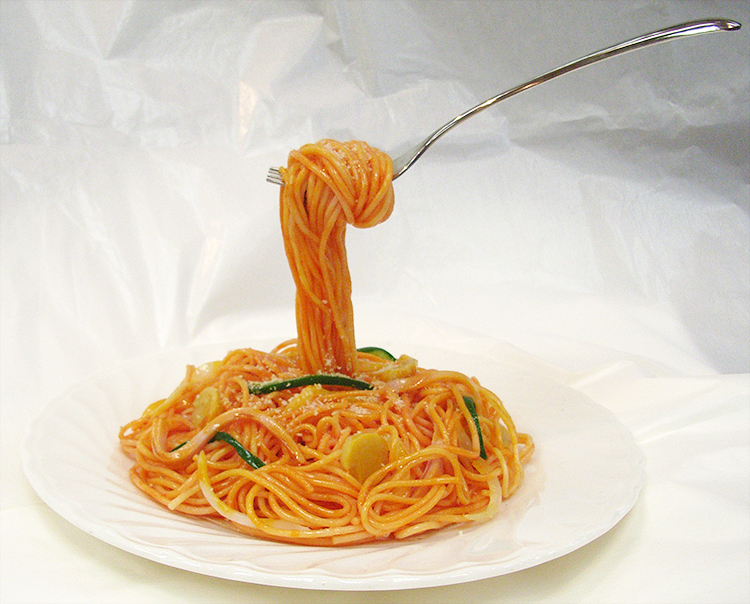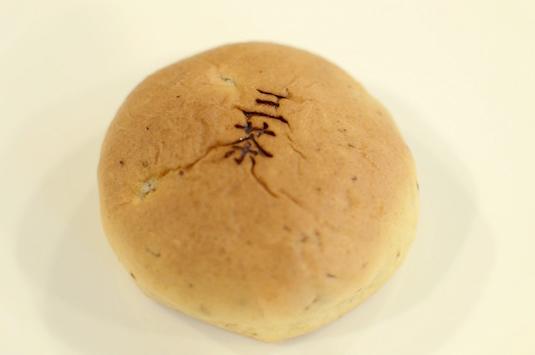Web Japan > Trends in Japan > Food & Travel > Best Street Packed with Kitchenware Specialty Stores in Japan
Best Street Packed with Kitchenware Specialty
Stores in Japan

With more than 170 stores, "Kappabashi Dougu Street" is the best place to go for kitchen utensils in Japan. ©Tokyo Kappabashi Dougu Street Promotion Union

Kappabashi Dougu Street is easily accessible by train, about 20 minutes from Tokyo Station, or 1 to 1.5 hours directly from Narita Airport.

Kappabashi Dougu Street is located 5 minutes on foot from the nearest subway station, Tawaramachi Station.
Japanese kitchenware, tableware, imitation food samples, and other culinary goods are popular among tourists to Japan from all over the world. You can find all such kitchen products in one place, on the street called "Kappabashi Dougu Street" (dougu means tools or utensils) in the neighborhood of Nishi-Asakusa in Tokyo. Each and every day there, a variety of shoppers ranging from professional cooks to tourists browse stores selling high-quality cookware at reasonable prices. The attractions of Kappabashi Dougu Street start with the history of Kappabashi, continuing on to popular kitchen utensils today.
170 Stores! An Amazing Array of Unique Specialty Stores
Kappabashi Dougu Street is located about 15 minutes on foot from the traditional areas of Ueno and Asakusa, two of the most popular spots for foreign visitors, in Tokyo. The street runs about 800 m from north to south, with 170 specialty stores standing side by side. Their specialties are one of the characteristics of the street. Each store is jam-packed from floor to ceiling with goods such as ceramics, lacquerware, confectionery tools or packaging. You can also find many stores selling somewhat unusual goods. For example, one specializes in restaurant uniforms, and another specializes in signboards.
People say that Kappabashi Dougu Street came into existence around 1910. At the time, several tool merchants and antique dealers set up their shops in this area, crowded with worshippers to a famous temple in nearby Asakusa. From this beginning to the 1950s, the street had more and more stores selling tools of the trade, until it became a street like what we see today. It gradually built up such a reputation that people would say, "All you need to open a restaurant is there."

Not only professional cooks shopping for high-quality kitchen utensils but also many ordinary people go to Kappabashi Dougu Street.
Diverse Specialty Stores Supporting Japanese Food Culture from Long Ago
One of the longstanding stores on Kappabashi Dougu Street specializes in Japanese and Chinese tableware. Founded in 1909, Komatsuya sells general tableware, including large plates, small bowls and rice bowls, but the No. 1 product in the store is ramen noodle bowls. Ramen is a type of noodle that was introduced in Japan from China more than 100 years ago, and it has since evolved into a cuisine unique to Japan. Many popular ramen restaurants serve ramen in special bowls that bear the restaurants' names. This store is a supplier of these bowls and sells other ramen bowls that feature a geometric design along the rim. You can buy these bowls and also small soup bowls that are the same as those used in famous restaurants.
This store's special ramen bowl used to be sold 60 years ago. Replicas are sold today and very popular among customers. ©Komatsuya
Another store on the street sells utensils for making Japanese and Western sweets. The store was founded in 1905 and specializes in confectionery tools, which include branding irons and pastry cutters. You may have seen patterns or characters branded on Japanese confections such as manju, which is a sweet bun. The attractive brands were made with branding irons. Pastry cutters are used to cut out Japanese confections in seasonal shapes such as a maple leaf. Branding irons are particularly popular, as customers can design the shape of their own custom-made brands.
The patterns and characters branded on confections like manju are made by a hot branding iron pressed on the surface of the confection. On the left are flower-pattern branding irons. ©Yokoyama
On the right is a manju branded with Japanese kanji characters.

Most pastry cutters for Japanese sweets are in the shape of plants representative of Japan, such as cherry blossom flowers and a ginkgo leaf. ©Yokoyama
Very Popular Kitchen Utensils Made with Japanese Techniques
Kappabashi Dougu Street seems to attract foreign tourists too. Stores offering lacquerware, imitation food samples and cutlery seem to draw many customers. What do many shoppers buy?
For tourists in a famous cookware store founded in 1908, the most sought-after goods by far are kitchen knives. Both the Japanese and Western kitchen knives at the store took a great deal of time and effort to make. With proper maintenance, they will cut well and last for a long time. Besides the knives, tourists look for yukihira pans, which are hand-made, one at a time by dedicated craftspeople (who are decreasing in number, even in Japan). These artisans create the embossed pattern on the pans by hammering. Yukihira pans are widely used in Japan, including for soups and simmered dishes, so every Japanese person is quite familiar with them and might have even used one.
A yukihira pan is hand-made, one at a time by a craftsperson hammering the surface. ©Kama-Asa
Stores on Kappabashi Dougu Street also sell imitation food samples. You can see samples created to look so perfectly real - looking like spaghetti, steak or sweets - that you may take a bite by mistake. Particularly popular are imitations of Japanese food, such as sushi and tempura. Visitors to Japan who come to these stores and buy these products say, "They're like toys and fun novelties." Some stores offer customers the experience of making their own fake food.

Spaghetti noodles are twirled on a fork and lifted in this sample. ©Tokyo Kappabashi Dougu Street Promotion Union

Replica sushi (left) and tempura (right) are popular among foreign tourists because they look so real. ©IWASAKI-Bei
Kappabashi may see more tourists as time goes on. And like the sightseeing tourists who walk along the street today after enjoying a bowl of noodles in a ramen restaurant or sweets from a Japanese confectionary, future tourists will also be looking for newly familiar Japanese tableware and kitchen utensils to bring back different aspects of Japanese food culture to enjoy.






